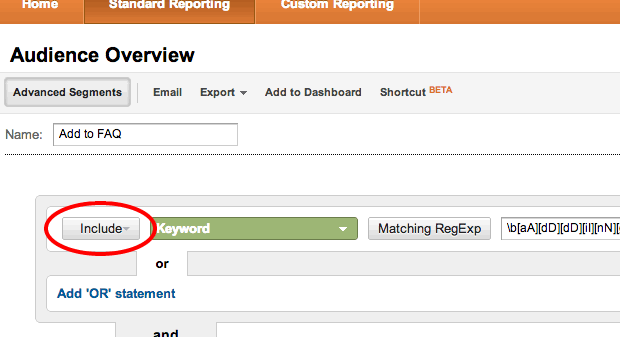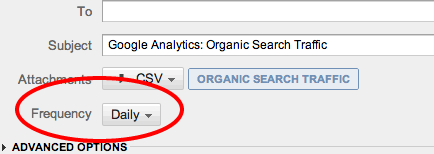
Using Google Analytics to Power an Effective Q&A Strategy
The author's views are entirely their own (excluding the unlikely event of hypnosis) and may not always reflect the views of Moz.
When we started Alarm Grid we struggled with how we were going to stand out in a world of like a trillion other security companies. We were late to the game, no doubt, and in a world with as much competition as there is in an old industry like home security, it seems like there isn't much you could do to compete with the million minds that have come before you. Since then, we've done a lot of fun things that have helped us to gain traction, but my favorite strategy we've executed on thus far is our security FAQs strategy. We have built an amazingly large database of super relevant Questions and Answers, and our users love them. Before we begin, let me introduce you to our executive team: Eric is on the left, Sterling is in the middle and I'm the guy on the right.
Like anything done in marketing, there aren't a whole lot of "new" ideas per se. But the question needs to be how to execute it based on what's available to you. As I've seen Q&A strategies executed previously, I think there are two main ways to put them together. The first is the way companies like SEOmoz or Trulia have done it. Both use their base of strong, engaged communities to answer questions. Trulia relies on users looking for homes to ask, and realtors looking for business to answer. SEOmoz is generally relying on its community members who are interested in seeking experts or being experts to answer and ask questions. This model works really really well. I can't tell you how many times I've had an SEO question or an analytics question and ended up on one of the SEOmoz pages with a good answer from some person I've never heard of or met. Very helpful, extremely engaging. The other method is what sites without much of a community do: a bunch of old guys who know their product too well get together in a room and think of 100 questions about their products. Then they answer the questions in 30 words or less, brush off their hands, and call it a day.
When you know too much about your product, you can't know what questions users will ACTUALLY find useful
So we needed a method that sat between the community approach and the stodgy old-men-in-a-room approach. Since we don't have an engaged set of users and we're not that old, we needed to figure out a method of populating the database that sat in between the two approaches, and I'm proud to say, I think we figured out a great way to accomplish this.
If you're a business owner, you're probably wondering if this FAQ business is a good idea for you. When we gave the strategy a try on Alarm Grid, we had the same question. I poured through Google Analytics (GA) data and saw that users had already started coming into the site with questions. They weren't getting them answered, but they were asking them.
So, what I did was I used GA to power our entire Q&A engine. When we started, we honestly thought we'd be able to keep up with the questions that came in. We now have a backlog of over 10,000 questions we want to get to... and that's with just Honeywell products in our catalog. Our goal is to get 80% of these questions answered before we add more brands to the catalog. Wish us luck.
I'm presuming that you already have GA installed on your site, and that you know anything about how to log in to your account... so here we go:
1) Click on Advanced Segments in the standard reporting section of your Google Analytics.

2) Select the button on the bottom right side of the drop down entitled "New Custom Segment"
This button unveils a glorious land of powerful analytics possibilities wherein you can create enormous value. The first thing you're going to want to do here is to make sure that you select "include" on the rule.

3) Select Keyword from the list of variable segment.

4) Then select "Matching RegExp"

5) Put this cute little chunk of code into the text box
(It's different looking than it is in the pictures above because I cleaned it up for this post so I didn't have to be so embarrassed about posting it).
\b(adding|does|do|who|what|where|when|why|how|will|can|\?|am|is|are|was|were|be|being|been|versus|vs|vs\.|best)\b
Now I ain't no RegExpert. I am terrible at Regex. And most of you probably don't even know what Regex is, so I'm sure there are more efficient ways to write this. But so you understand what you've done, let me clue you in. You're filtering for anyone who comes to your site using the keywords within the parentheses including any query that a user makes that contains a question mark. The regex idiot proofs it so that you anyone can add weird capitalizations and still have their search filtered (at least that's supposed to be how it works). If you want to clean up the regex, feel free. I would love to see it done, it just doesn't matter that much since this works pretty darn well.
6) Give your filter a cute name. We call ours "Add to FAQ" since that's what is supposed to happen.

7) Save your segment and turn it on.
8) In the left-hand column click on "traffic sources" then "sources" then "search" then "organic".

8) Now, set the date range to show only one day - yesterday.

9) Scroll to the very bottom of the page and select the dropdown next to the words "Show rows" and select 500.

Now this is a bit optimistic. You really only need the maximum possible number of results from each day. The number starts small, but if you execute this strategy correctly, you may be seeing 500+ visitors each day asking questions and getting to your site.
10) Go back to the top of the page, and select "Email," and fill the email(s) you want the daily spreadsheet to go to in the pop-up.

Also make sure to change the "Frequency" to "Daily." You can actually make it as frequent or infrequent as you want. I recommend daily, because, particularly when you are only seeing a few FAQs a day, it's better that everyone gets a few FAQs in the morning before things get hopping. Think about it, if you have two employees pumping out two FAQs every morning, first thing, you will have 1460 FAQs in by the end of the year. The average FAQ, in our case, bumps our average daily uniques by 1/3 of an user. Each FAQ takes an average of 15 minutes to write. At the end of the year, we'll have used about 730 hours of our employees' time to grab an extra 5,000 unique visitors each and every month. That's a huge boon for an ecommerce site.

And that's that.
What I like to do is once a month, dump the spreadsheets into a big, master list. Then I can filter on the spreadsheet by keywords within the questions, which allows us to manage our more than 10,0000 outstanding questions. We generally attack them by subject. So, for example, we do a week of Vista 20P (which is a Honeywell product we carry) questions only or some weeks we answer all the questions people have asked about Alarm Grid's alarm monitoring. This is the most effective kind of inter-linking we could possibly put together. The Q&As are relevant, and the anchor texts are surrounded by perfect semantically relevant writing. We require all articles contain 300 to 500 words, even if it's just a simple answer. We also find that it's best not to bury the lead. So when a user lands on a page, start by answering the question, then put more text below it that will expound and further explain why the answer is "yes" or "no."
You can do a lot of other fun stuff as well with this strategy. For example, to root out duplicates, you could only have questions where the user doesn't land on a URL with /faq in it. Our system is accurate up to about 87% when we do this, meaning this uproots 87% of all duplicates. There are a ton of other fun ways you could run this engine, but there isn't enough time in a day. If you do something fun that is hugely helpful for you, I'd love to know about it.
So give this all a try! And then report back, Let me know and the rest of the Alarm Grid team know how it works for you!



Comments
Please keep your comments TAGFEE by following the community etiquette
Comments are closed. Got a burning question? Head to our Q&A section to start a new conversation.